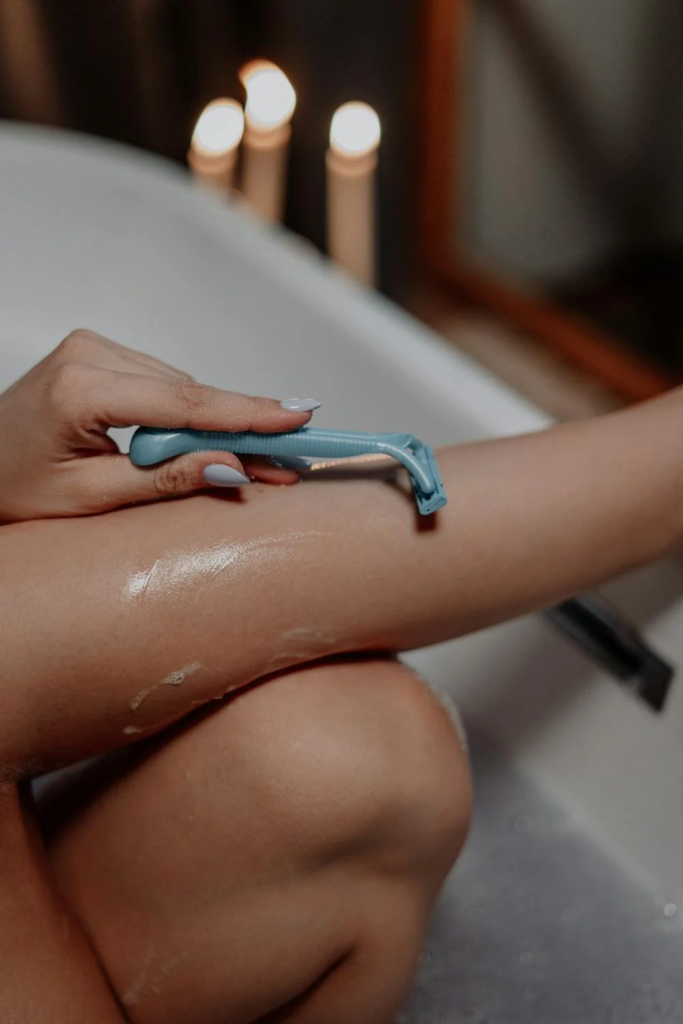Shaving is a common practice for many individuals, but shaving improperly between sessions can lead to a number of undesirable consequences. These risks not only affect the quality of your shave but also the health and appearance of your skin.

If you’re wondering about the specific dangers associated with shaving incorrectly, this article will address the key risks involved. Discover more about how improper shaving techniques can negatively impact your skin and overall shaving experience.
Risk Of Skin Irritation
One of the most immediate risks when shaving improperly between sessions is skin irritation. When shaving without adequate preparation, such as not softening the skin or using a dull razor, your skin is more likely to react negatively.
Causes Of Skin Irritation
- Shaving without preparation: Dry or unsoftened skin can lead to friction, causing irritation.
- Using a dull razor: Dull blades increase the likelihood of rough shaves, leading to abrasions and redness.
- Shaving too often: Excessive shaving without sufficient recovery time can make the skin more sensitive.
Symptoms Of Skin Irritation
- Redness
- Itchy skin
- Burning sensation
- Rashes
If irritation occurs, it may result in discomfort and leave your skin feeling sore or sensitive. Regular shaving without proper care can aggravate this problem.
Risk Of Razor Burn
Razor burn is a common and painful issue that occurs when shaving improperly. It can make the skin appear red, blotchy, and inflamed. This happens when the razor blade irritates the skin due to insufficient lubrication or excessive pressure.
Causes Of Razor Burn
- Shaving dry skin: Without enough shaving cream or gel, the razor drags across the skin, causing friction.
- Too much pressure: Pressing too hard on the razor can scrape away layers of skin, leading to burn-like symptoms.
- Shaving against the grain: Shaving in the opposite direction of hair growth can lead to more irritation.
Symptoms Of Razor Burn
- Red, inflamed skin
- A burning or stinging sensation
- Bumps on the skin
To avoid razor burn, always ensure you’re using the right shaving cream and don’t rush through the process. Use gentle strokes to minimise irritation.
Risk Of Ingrown Hairs
Improper shaving can also lead to ingrown hairs, a condition where hair grows back into the skin instead of outward. Ingrown hairs can be painful and lead to additional skin issues, including infection.
Causes Of Ingrown Hairs
- Shaving against the grain: Shaving in the wrong direction can cause hair to grow back at an angle, becoming trapped under the skin.
- Using a dull razor: A dull blade can cause hair to be pulled rather than cut cleanly, leading to hair that curls back into the skin.
- Not exfoliating: Dead skin cells can clog hair follicles, increasing the likelihood of ingrown hairs.
Symptoms Of Ingrown Hairs
- Red, inflamed bumps on the skin
- Painful to the touch
- Pus-filled lesions if infected
Ingrown hairs are not only unsightly but can lead to infections or permanent scarring if left untreated.
Risk Of Nicks And Cuts
Shaving improperly increases the risk of cuts and nicks, which are not only painful but can lead to scarring if not addressed quickly. These injuries occur when a razor blade grazes the skin, cutting through it.
Causes Of Nicks And Cuts
- Using a dull razor: Dull razors require more pressure to cut hair, which increases the likelihood of cuts.
- Shaving too quickly: Rushing through the process can cause you to lose control of the razor, leading to accidental cuts.
- Not shaving in the right direction: Shaving against the grain or in awkward angles can lead to nicks.
Symptoms Of Nicks And Cuts
- Small, sharp cuts on the skin
- Bleeding that may persist for some time
- Painful healing process
Nicks and cuts can also lead to scarring if they are not properly treated, making it important to be mindful of your technique when shaving.
Risk Of Dry And Sensitive Skin
Another major risk of improper shaving is the development of dry and sensitive skin. Shaving can strip the skin of its natural oils, leading to dryness and a decrease in the skin’s overall health.
Causes Of Dry Skin After Shaving
- Shaving too frequently: Shaving without giving your skin time to recover causes dehydration.
- Shaving without moisturising: Neglecting to moisturise after shaving leaves the skin susceptible to dryness.
- Using harsh shaving products: Some shaving creams or gels contain alcohol or other drying agents that worsen dryness.
Symptoms Of Dry Skin
- Flaky, tight skin
- Redness or irritation
- Increased sensitivity
Dry skin can become cracked and more prone to infections. It is essential to moisturise your skin after every shave to maintain its health and elasticity.
Risk Of Skin Infections
Shaving improperly can create small cuts and openings in the skin, increasing the risk of bacterial infections. When the skin is not properly cared for, these small nicks can become infected and cause more severe health issues.
Causes Of Skin Infections
- Leaving cuts untreated: Failure to clean and disinfect cuts can allow bacteria to enter the skin.
- Shaving over infected areas: Shaving over existing pimples or open wounds can spread bacteria and lead to further infection.
- Using unsanitary razors: Dirty or old razors can harbour bacteria, which can be transferred to your skin.
Symptoms Of Skin Infections
- Pus-filled lesions
- Swelling and redness around the cut area
- Pain and tenderness
Skin infections, if not treated promptly, can lead to more severe conditions, such as cellulitis or abscesses, requiring medical intervention.
Risk Of Uneven Shaving
Improper shaving techniques can result in an uneven shave, where some areas are left with longer hair than others. This is not only unappealing but can also lead to further irritation when trying to correct the uneven spots.
Causes Of Uneven Shaving
- Shaving with a dull razor: A dull razor can leave patches of hair, leading to an uneven shave.
- Shaving too quickly: Rushing through the shave often results in missed spots and uneven coverage.
- Shaving without attention to detail: Neglecting areas or not following the natural lines of your face can cause an uneven shave.
Symptoms Of Uneven Shaving
- Visible patches of longer hair
- An unsatisfactory, incomplete shave
- Frustration and the need to re-shave certain areas
Uneven shaving can result in discomfort and may require extra time to fix, further aggravating the skin.
Conclusion
Shaving improperly between sessions can lead to a variety of risks, including skin irritation, razor burn, ingrown hairs, nicks and cuts, dry skin, infections, and an uneven shave. These issues not only cause discomfort but can also result in long-term skin damage if not addressed properly.
To avoid these risks, it’s essential to follow proper shaving techniques, use the right tools, and take care of your skin both before and after shaving. By doing so, you can ensure a smooth, irritation-free shave that keeps your skin healthy and looking great.
Frequently Asked Questions
What Causes Razor Burn And How Can I Prevent It?
Razor burn is caused by irritation from shaving, often due to dry shaving or using a dull razor. To prevent razor burn, always use shaving cream or gel, ensure your razor is sharp, and avoid pressing too hard on your skin.
How Do I Avoid Ingrown Hairs When Shaving?
To prevent ingrown hairs, make sure to shave in the direction of hair growth, use a sharp razor, and exfoliate your skin regularly to remove dead skin cells that could block hair follicles.
Why Does Shaving Too Often Lead To Dry Skin?
Shaving too often strips the skin of its natural oils, leading to dryness and sensitivity. It is important to allow your skin time to recover between shaving sessions and to moisturise after each shave.
